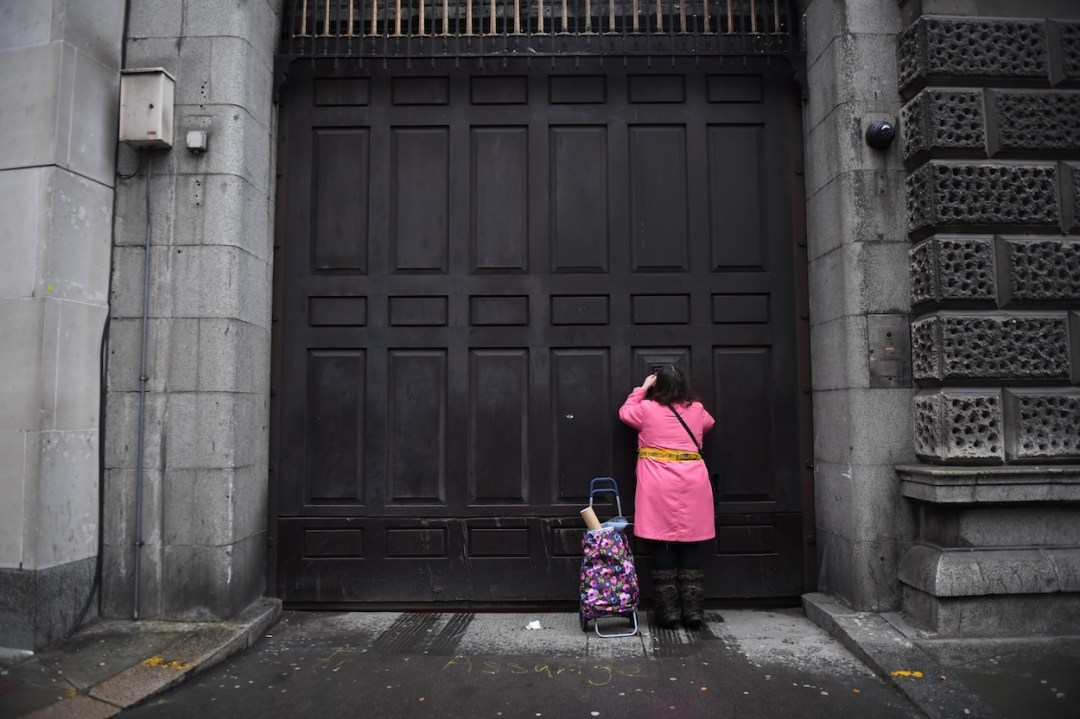There are not many women in prison, but those who are inside show worryingly high rates of mental illness, suicide and self-harm; their families suffer badly while they are inside, and when they are released, few of them come out rehabilitated in any real sense. Given this, you can see why the new Lord Chancellor, Shabana Mahmood, told the Labour conference that she wanted to reduce the number of female prisoners and announced the setting up of a Women’s Justice Board under prisons minister, Lord Timpson, to see how this could be done.
For every woman locked up in this country, there are something like 25 men
Sounds good? Possibly. I’d suggest a degree of caution. One point is that, looked at closely, what is being proposed is not so much action as rather more bureaucracy. What will the new board do? It will ‘bring together senior leaders in the criminal justice system, charities and government departments’ and – you’ve guessed it – publish a strategy and then meet regularly to discuss it. More paperwork. Nor is this the only proposed collection of functionaries. There will also be yet another body, to be called the Women in Justice Partnership Delivery Group, composed of ‘experts from the voluntary and community sector’, recruited by open competition (i.e., the rather hidebound Whitehall application process open to the great and the good), whose job will be to supervise the first group and publish reports on its progress. No doubt this piling of committees upon committees went down very nicely on the Liverpool waterfront, but don’t hold your breath when it comes to these bodies actually doing very much.
Nor is this very surprising. The problem faced by Shabana Mahmood is that her political possibilities are actually rather constricted. The Crown Prosecution Service can hardly be called on to discriminate between the male and female accused, nor to instruct its prosecutors to argue for less onerous sentences for women. Still less can a government be seen to be leaning in any way on magistrates or judges to exercise their sentencing powers so as to imprison women less than men.
Of course, it remains true that some crimes are over-represented in the female prison population. Ah, you might ask: why not discourage imprisonment for those, knowing that this could have an indirect but dramatic effect on the number of women incarcerated? Unfortunately, this too causes problems. A classic crime of this sort is shoplifting, accounting as it does for about twice the proportion of women locked up as it does for men. However, even the most leaden Labour parliamentarian will be perfectly aware that a policy of discouraging imprisonment for shoplifting would play disastrously, particularly in light of the fact that Labour’s own King’s Speech a couple of months ago specifically promised a clampdown on shop theft.
The real difficulty lies in the fact that Shabana Mahmood is attempting, in good Labour style, to present the issue of women in prison as a matter not so much of penal policy as of feminism. This is a difficult line to hold. One problem is that while the UK has an uncomfortably high proportion of its population in prison (at present about 140 out of every 100,000), it is one area where women have a massive advantage over men: for every woman locked up in this country, there are something like 25 men. For someone who believes in the promotion of equality, it looks a bit odd to concentrate on reducing the former rather than the latter figure.
Another difficulty is that the issues Shabana Mahmood has chosen to highlight – self-harm, mental health problems, recidivism, the inappropriateness of locking up at least some non-violent offenders and so on – are serious problems throughout the prison estate. Yes, those problems are more severe among the (much smaller) female prison population, but are we to disregard the men whop face those same problems? Furthermore, because of the sheer numbers of male prisoners, these issues pose a greater threat to order in our prisons and society as a whole. To announce measures to deal with these problems specifically among women prisoners rather than among prisoners generally looks simply perverse.
It would have been wiser for the government to look for ways of reducing the numbers of prisoners as a whole and improving the lot of all those who have to be locked up. Instead, Labour is focusing on the 3,000 or so women in the prison estate with no mention of the problems of the 80,000 male prisoners holed up in stinking jails up and down the kingdom. Starmer has already earned the name ‘two-tier Kier’: if she is not careful, Shabana Mahmood may find that she is accused of the same thing.








Comments